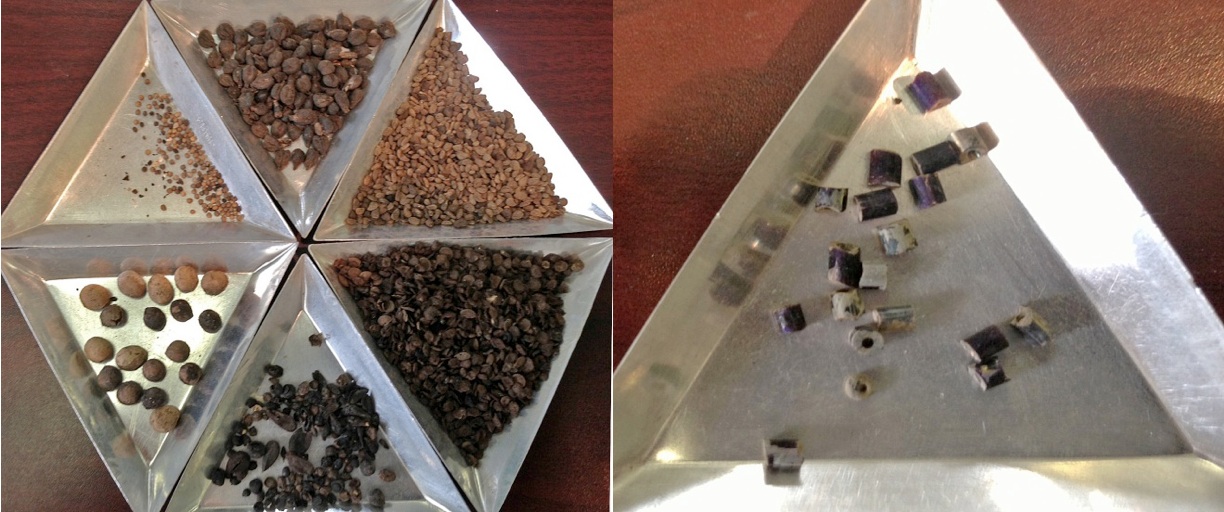Brian Seidel – shares a ‘Day of Archaeology’ (07/25/13)
Brian Seidel
Assistant Lab Supervisor
URS Corporation
Burlington, New Jersey, USA
7/25/13

FLOTATION
Flotation is the process by which the smallest and most delicate artifacts are separated from soil for analysis. Artifacts collected using this method can provide important information related to: reconstructing past diet and food consumption patterns, past environmental conditions, and the broad range of activities performed within an historic property or site. Soil samples collected during feature excavation are processed in a flotation tank that utilizes water pressure to separate the soil from the artifacts. During this procedure very light artifacts (light fraction) float to the surface and are collected in a catch bag, while the remainder of the artifacts (heavy fraction) are collected in a fine mesh screen as the soil and artifacts sink towards the bottom of the tank.
This week the heavy fraction from feature 364 at the Gunnar’s Run Site (Philadelphia, Pennsylvania, USA) was picked in the URS lab (Burlington, New Jersey, USA). This feature was a brick lined circular shaft. Today I cataloged the recovered artifacts. This included several varieties of seeds; raspberry, grape, squash, cherry, chestnut and a variety of yet to be identified seeds. Other items found included; 19 beads, lead shot, nut shells, wood fragments, small glass fragments, a Whiteware sherd, brick and coal fragments.
by admin